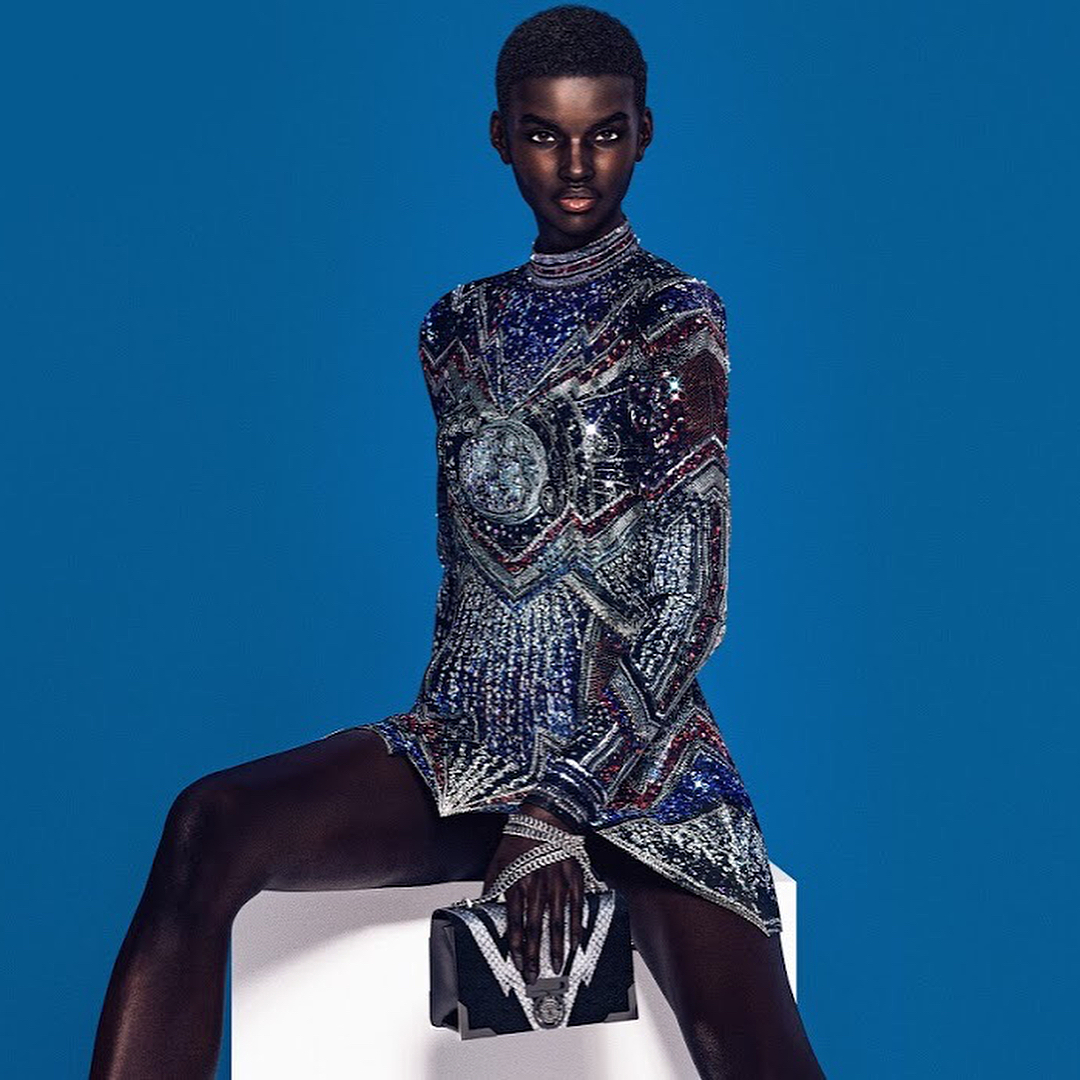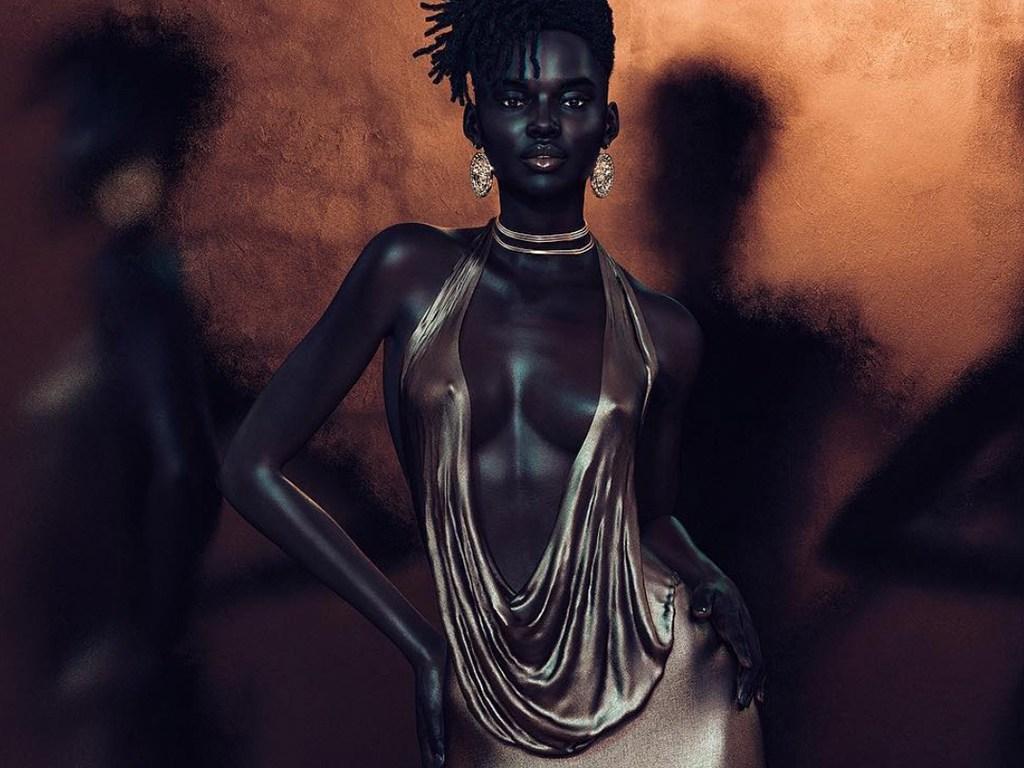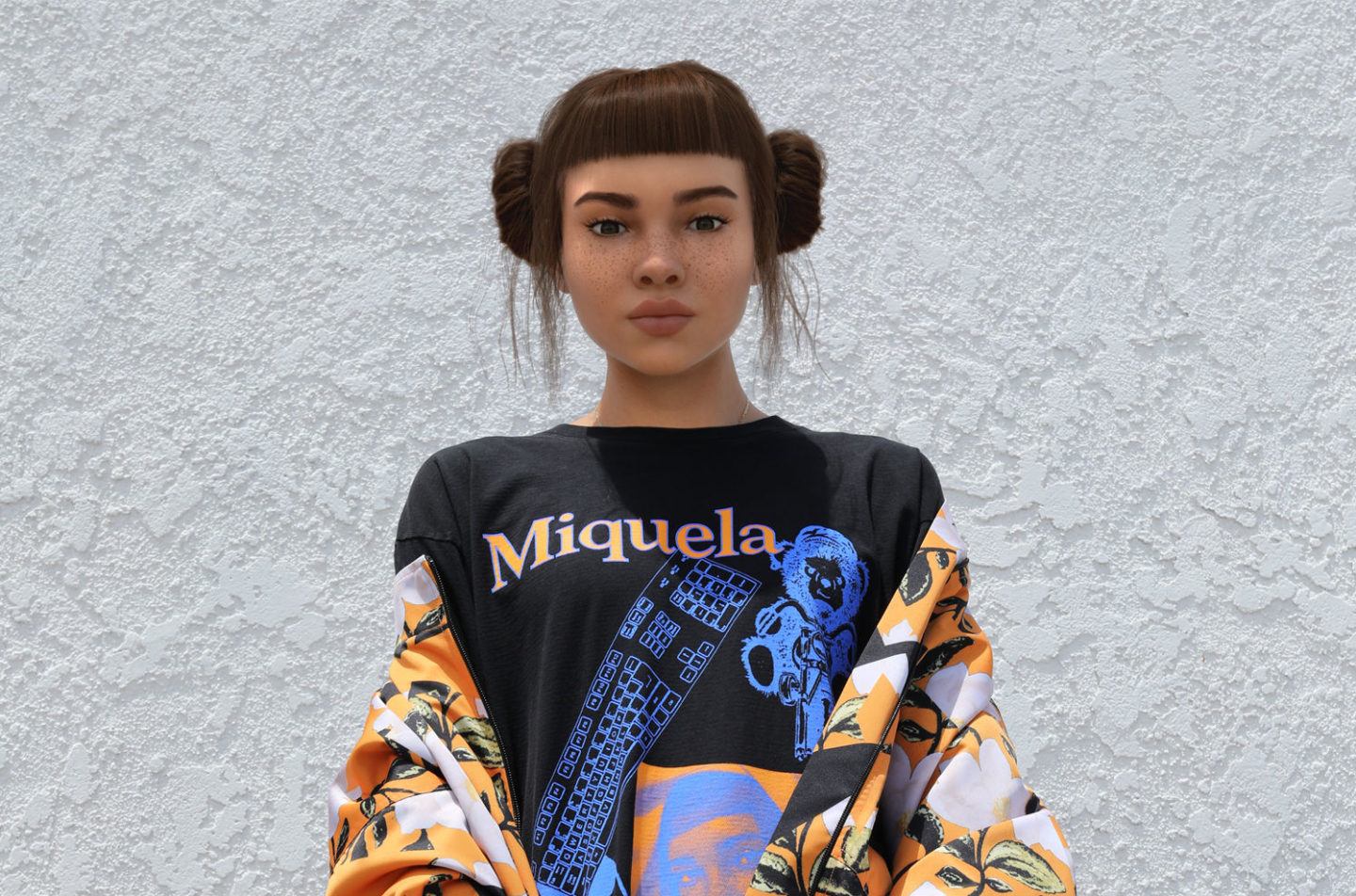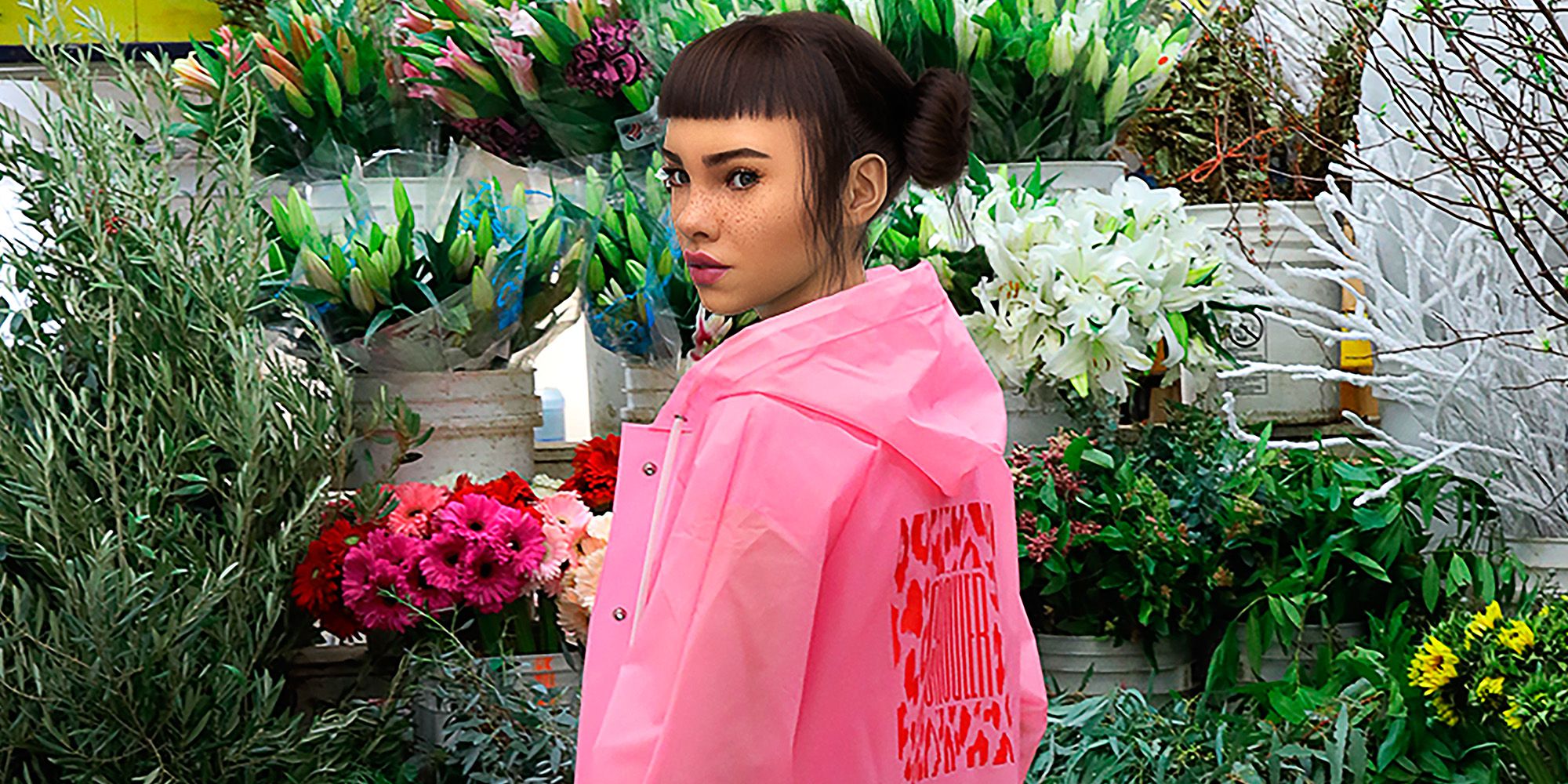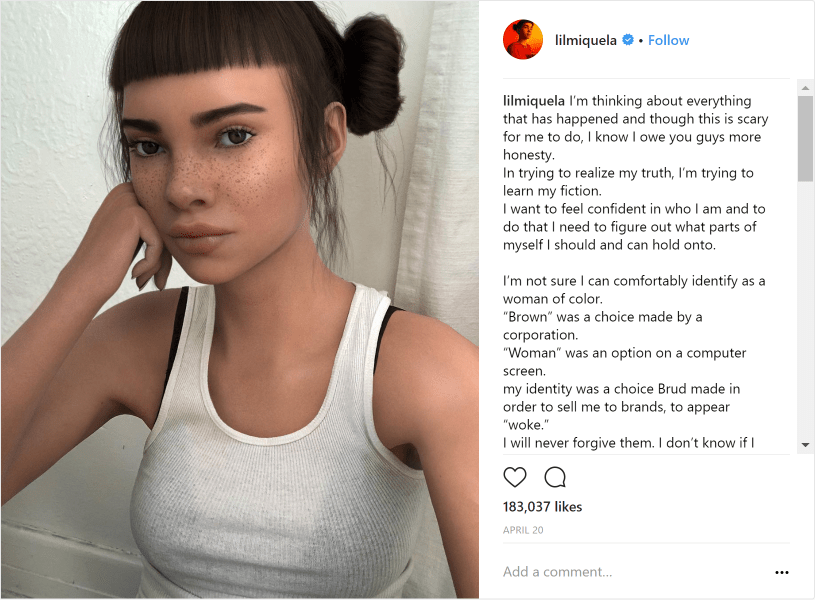Dangerous Visibility

Often times I find myself mindlessly scrolling through Instagram, telling myself to stop after the next full page scroll but not doing so until hours later. Though there were times where I was scrolling more than studying this did not yield without some interesting results. Increasingly on my Explore page, I noticed AI users. AI users are created by computer engineers and powered by artificial intelligence to post as real people would. Without them explicitly declaring it or ample background research their realism makes it unclear whether they are living people or CGI The perfection of their faces and bodies are not immediately alarming as we are in an age of social media and warped reality, sponsored heavily by behind-the-scenes editing. Hence, These CGI accounts have comment sections filled with idolizing fans and dismayed haters. They pose and serve as billboards for brands and have the follower counts comparable to real influencers. Most of them are also computer-generated images of color, from dark skin women to Latina teens. Popular CGI users like Miquela (@lilmiquela) and Shudu (@shudu.gram) have capitalized off their looks and popularity to win the attention of the fashion industry.
Prada has already partnered with Miquela, a multiracial Black Lives Matter advocate, to popularize the Instagram gif pack for their Fall 2018 campaign. Balmain unveiled their “virtual army” by featuring CGI Models Shudu, Margot, and Zhi in their pre-fall 2018 campaign. Creative Director, Olivier Rousteing, praised the diversity of the models in the campaign for its representation of Black and Asian women. Other luxury brands such as Dior and Louis Vuitton have also employed digitized models most of whom represent people of color. While I do not blame brands for taking advantage of this innovation in technology and applied use in social media, I believe this increase in diverse visibility is happening in the wrong way. Let me explain.
The fashion industry is notorious for its lack of diversity. Whether it be by race, body size, or age, it is not historically an industry of inclusion or accurate representation. The CGI Balmain campaign and Prada partnership are counters to the homogeneity of the fashion world; however, their execution is unsettling. Rather than employing actual women or men of color, they instead choose digitized reproductions taking away opportunity from the actual people they are trying to represent. There is merit to the diverse visibility done through CGI. The problem lays in that it does so, literally, in the most dehumanized way. Diversity has become such a buzzword in the industry that houses are scrambling to stay ahead of the curve and appear as such. They’re doing so, however, in a cop-out way that gives the illusion of diversity without the interactions that come with it. The industry wants to use people of color to be more marketable but does not care about the actual employment of them. In essence, their diversity initiative is for looks only, an empty promise to bring about change.
Not all is bad and evil. Active and applaudable efforts are being made to increase representation. For example, Rihanna’s lingerie line Savage x Fenty debuted in 2018 NYFW showcasing a variety of body types. During the 2017 London Fashion Week, Simone Rocha featured then 72 years old model Jan de Villeneuve. These appearances not only increase visibility but bring about change in their employment of non-traditional fashion bodies. The diversity initiative is more than visibility, it is also about action. The employment of CGI models lacks the action that would make a lasting difference in fashion and for the people involved. CGI’s can be the first steps in the progression towards more diversity and visibility but they should be taken with caution. The employment of digital models can be dangerously regressive if they are used in place of actual diverse models leaving the real people in the industry homogeneously white, young, and thin.

